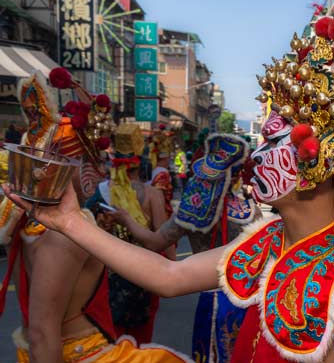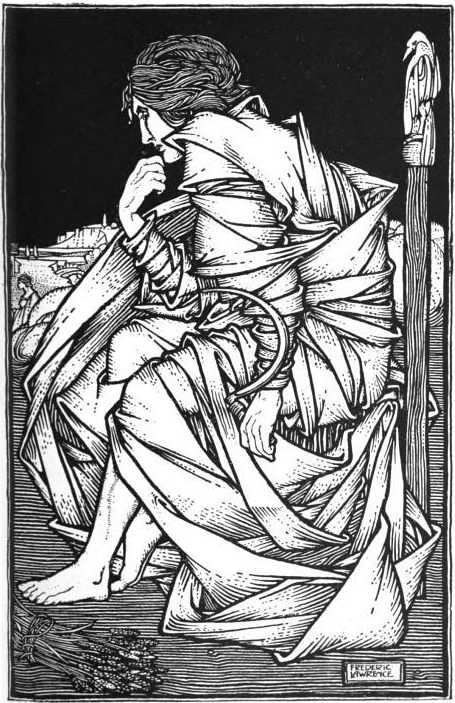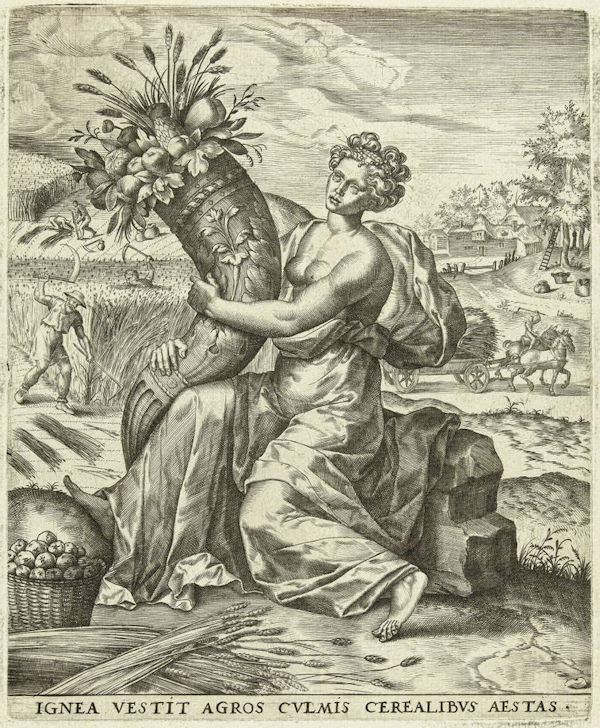In the Northern Hemisphere it’s finally summertime. Time to shake off the thick winter blanket and step into the warm sunshine. Walking outside, hiking up mountains, biking, camping. A whole host of fun outdoor activities await—and I can’t wait! Along with the outdoor activities, I’m also really looking forward to reading and writing outside as well.
Fellow writers and creatives, you may remember my Autumn Deities post, to hopefully spark some interest in weaving in deities into your worldbuilding…well, here’s the summer version!
Áine, the Irish Goddess
- What she’s known for: Áine is an Irish goddess of summer, protection, and sovereignty. Among many things, her name means “brightness” and “joy.” She’s also the goddess of love, fertility, and wealth. She’s commonly associated with midsummer, and she has two different roles—as a moon goddess and a sun goddess—with different jobs associated with each. For example, as the moon goddess, she guards crops and cattle. Her sacred animals include the swan, rabbit, and red mare.
- Fun Fact: She has SO MANY OTHER NAMES—Faery Queen, Love Goddess, Lady of the Lake, the Goddess of the Earth and Nature, the Goddess of Luck and Magick, and Leanan Sidhe.
- Why I like Áine: As her role of a sun goddess, she can transform into a red mare (one of her sacred animals) and can outrun everyone!
Hine-raumati, Maori Summer Maid
- What she’s known for: Hine-raumati is the personification of summertime! She’s one of two wives of Tamanuitera, the sun god, who lives in the earth. She plays an important role in helping the trees and plants to grow and produce fruit.
- Fun fact: During the summer solstice Tamanuitera sits with Hine-raumati, and then as the nights grow longer and the days shorter, he’ll travel back to his second wife, Hine-takurua.
- Why I like Hine-raumati: Hine-raumati’s found in the warm and fertile soil of spring and summer, which after a long cold hard winter, sounds just lovely to me.
Xia Da Shen, Taiwan God of Summer
- What he’s known for: Xia Da Shen is part of the eight generals or the Ba Jia Jiang. Ba Jia Jiang brings together secondary deities to form a bodyguard for the gods and a police force for mortals both alive and dead. Xia Da Shen is part of the minor subset of Ba Jia Jiang, along with the other three Gods of the Seasons. They’re all represented by a flower or plant, and when the Ba Jia Jiang captures bad spirits, the Season Gods are tasked with the interrogation.
- Fun Fact: His responsibility of being the God of Summer is to torture prisoners by burning them. (Don’t get on this guy’s bad side.) To do so, he carries a pen huo qi or brazier.
- Why I like Xia Da Shen: His face resembles a turtle pattern, and his face paint utilizes a flame design. One of his additional designs is a plum blossom!
Freyr, the Norse God of Sun and Summer
- What he’s known for: Freyr rules over the sun and rain. He gave peace and pleasure to mortals and cultivated life into fields. He was also a Vanir (an esteemed race of Norse gods) and was worshipped as symbol of fertility.
- Fun fact: His dwarf-made magical artifacts are pretty badass—an intelligent sword that never misses its target, a fantastic ship, and a golden boar.
- Why I like Freyr: An intelligent sword that never misses its target. Need I say more?
BONUS DEITY—Aestas, the Roman personification of summer
- What she’s known for: Aestas was mentioned in Metamorphoses by Ovid and may actually be his creation, which is why I chose her as a bonus deity. Someone literally wrote her into existence and into the canon of “summertime deities,” and as a writer, that’s encouraging! Apparently, Ovid described her as being naked except for a garland of grain in her hair.
- Fun fact: Aestas means “summer” or “summer heat.”
- Why I like Aestas: Ovid might’ve gleaned some inspiration from the Greek Horai, or the goddesses of the seasons, as they were usually shown as having a garland of fruit or flowers that corresponded with their respective seasons.
– – –
There you go! If you want to create some unique summertime deities in your world, you can use these creations as a building block!
Title image background by Karina Vorozheeva.






